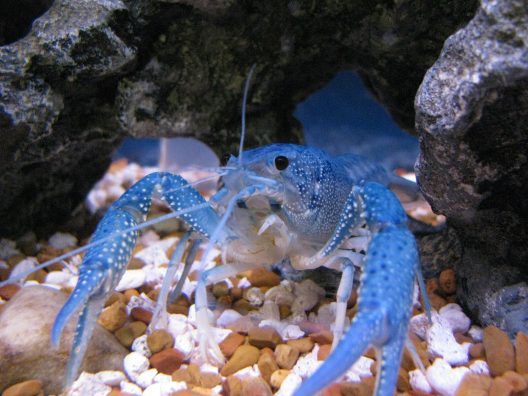They may be small, but crayfish are mighty in other ways, one of them being invasive risk in areas where they are not natively found. A type of freshwater crustacean, crayfish are increasingly being traded online for ornamental purposes, such as aquariums. In a new study led by SAFS Professor Julian Olden and published on Sept. 9 in Conservation Biology, the first ever global assessment of the online trade in and associated invasion risk of freshwater crayfishes was conducted with co-author Francisco Carvalho from the University of Minho.
We are all familiar with the global pet trade, ranging from buying dogs and house cats to the trade in exotic pets and endangered species such as pangolins. But the trade in terrestrial species is not the only one occurring. The global pet trade, including aquatic species, constitutes a burgeoning pathway for the intentional introduction of non-native species, with 6-19% of hobbyists admitting to releasing unwanted aquarium animals into the wild on at least one occasion. Popular stories of released goldfish growing to the size of a football might be ringing a bell. Crayfish are another aquatic species increasingly traded via e-commerce over recent decades, presenting an invasive and biosecurity risk when released into the wild.
Hot spots of invasion risk were identified in the new study as those areas facing both high frequency of listings offering shipment and favorable environmental conditions to support species establishment. By systematically examining e-commerce marketplaces in multiple languages, scraping information that included species identity, price, quantity, and shipping designation from each crayfish listing, the researchers revealed that the global crayfish trade involved online marketplaces in 33 countries spanning five different continents. Germany (17% of listings), the United States (13%), South Korea (9%), Russia (7%), and France (6%) were found to be the epicenters of online ornamental marketplaces, although the study found websites selling crayfish located across the globe.
Where are these crayfish ending up? Olden and Carvalho identified the major shipping routes with respect to the number of species offered and total listings. Germany (33 species with 34% of listings) and Spain (24 species with 8% of listings) were the major shippers to countries in Europe, with the United States to Canada another major route (15 species with 4% of listings). They also found that most marketplaces that shipped internationally were in Europe and Asia (81%), and the major trade routes occurred in Europe, particularly between EU countries.
The geographic hotspots for invasive risk of non-native crayfish coincided with both elevated opportunities for introduction (greater shipping offerings) and establishment. Many options exist to tackle this issue, such as fortifying border inspections, enforcing current law, enhancing communication with the ornamental species industry, and encouraging humane disposal of unwanted ornamental species versus releasing into the wild. However, the shift of commerce away from brick and mortar to online clicks has posed many regulatory challenges to enforce these actions. Persistent gaps in understanding the online pet trade remain, but this study presents an important first step because the results illustrate the taxonomy, geography, and economics of the global online trade in ornamental crayfish.


